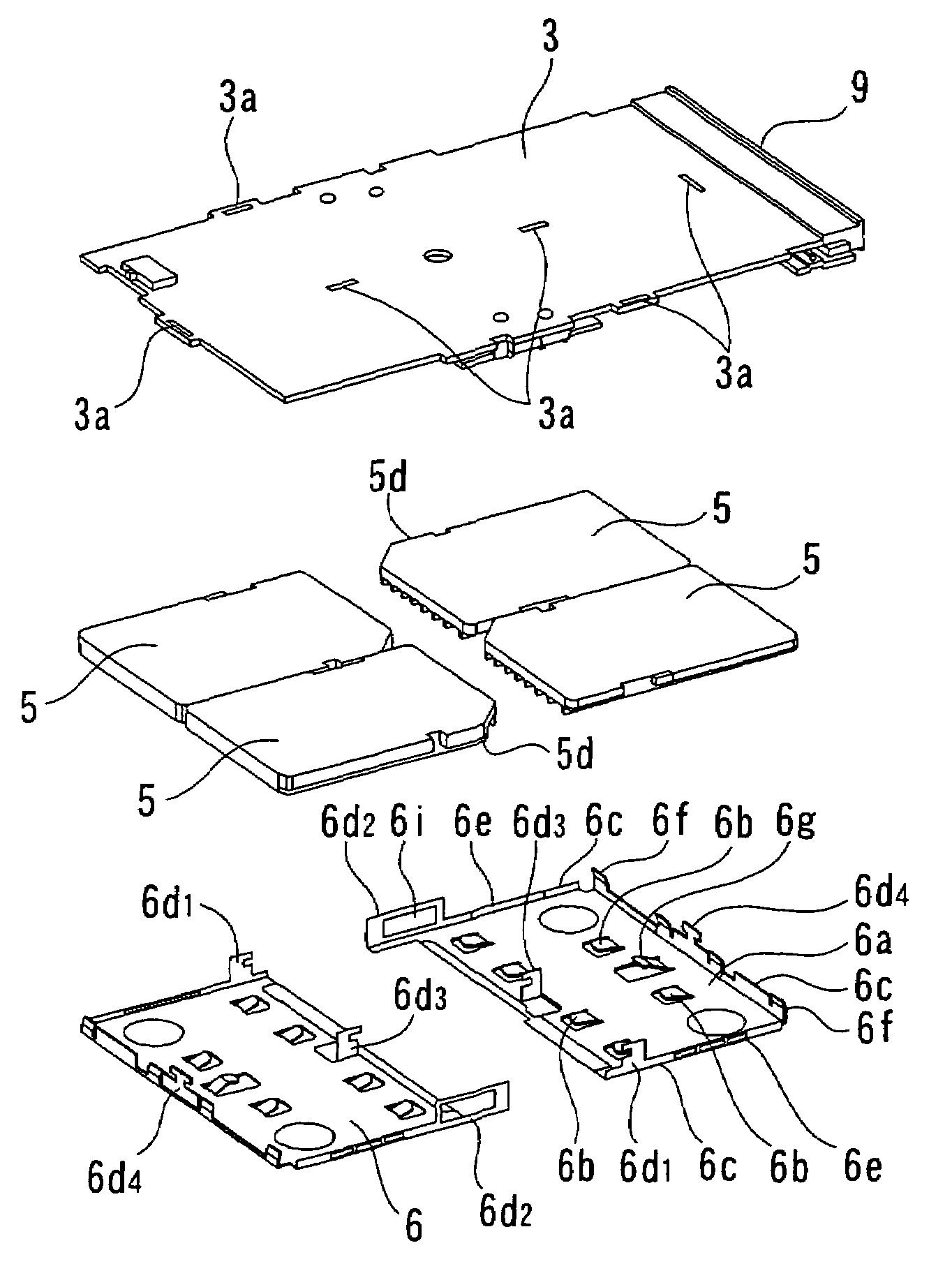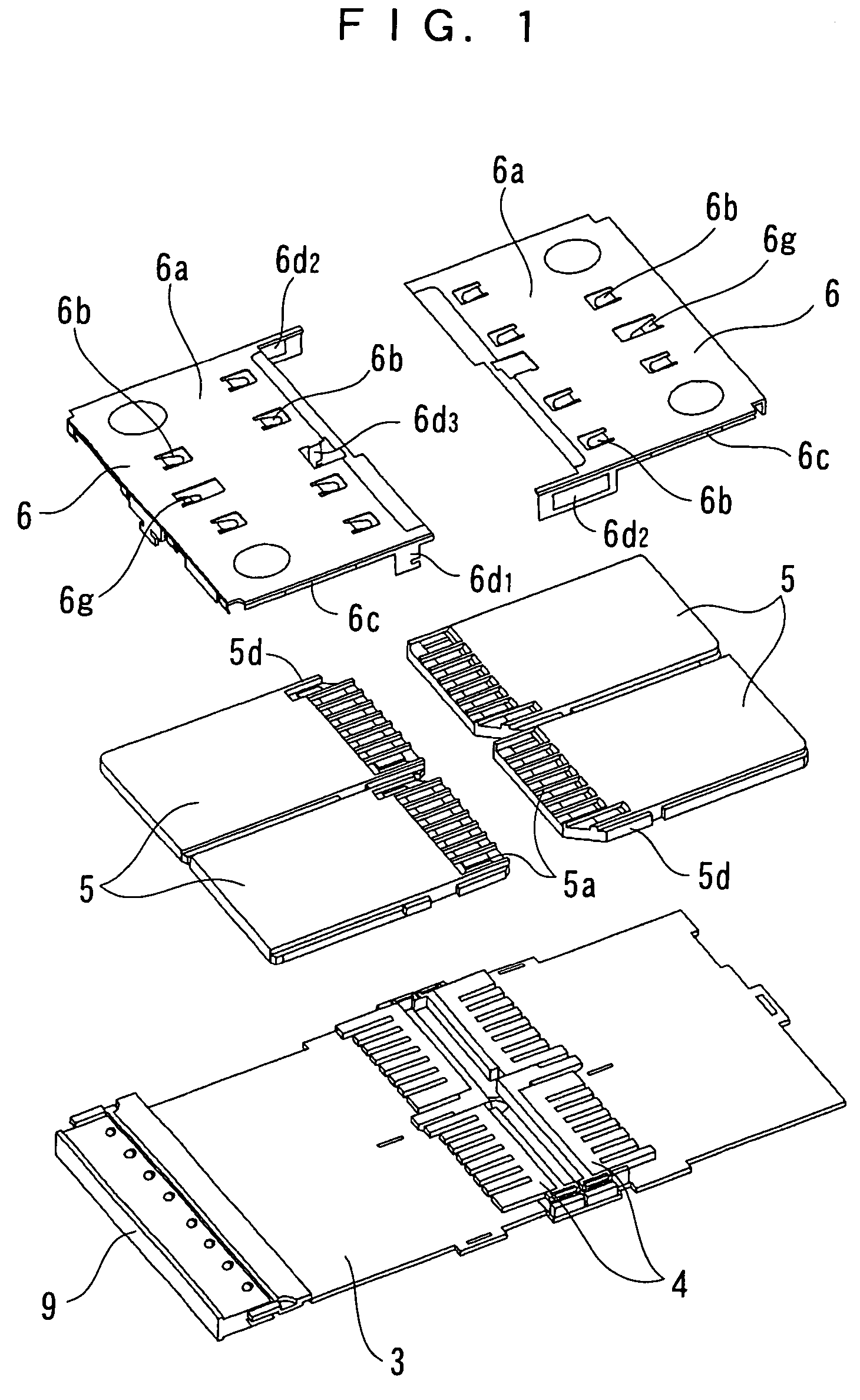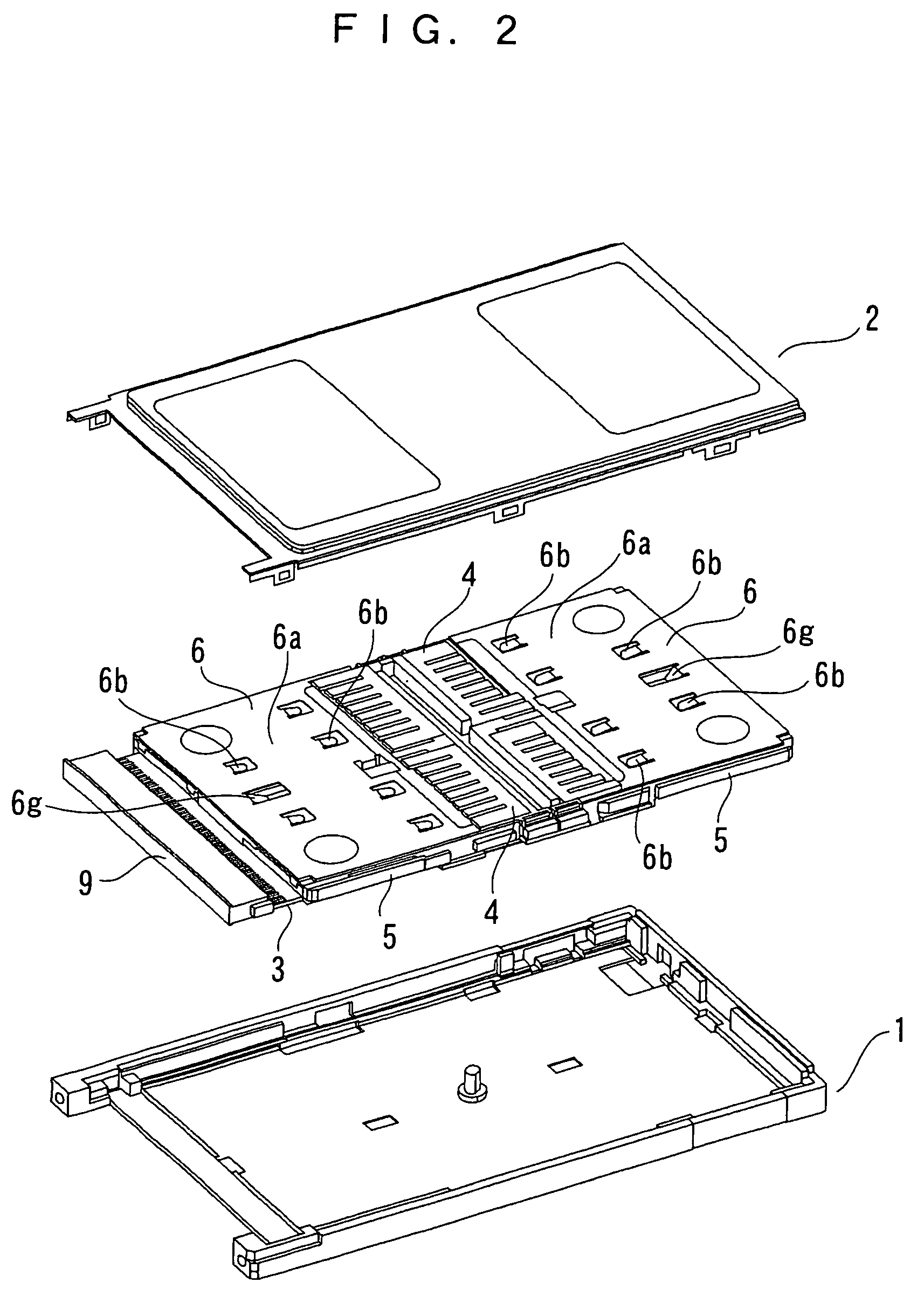PC card
a technology of printed circuit boards and pc cards, which is applied in the direction of electrical apparatus casings/cabinets/drawers, coupling device connections, instruments, etc., can solve the problems of increasing manufacturing costs, reducing the height of electric components to be mounted on the bottom face of the printed circuit board b>3/b>, and achieving high reliability
- Summary
- Abstract
- Description
- Claims
- Application Information
AI Technical Summary
Benefits of technology
Problems solved by technology
Method used
Image
Examples
embodiment 1
(Background Description)
[0049]FIG. 1 is an exploded perspective view depicting the major areas of the constituent elements of the PC card according to the present invention, FIG. 2 is an exploded perspective view depicting the constituent elements of the PC card, and FIG. 3 is an exploded perspective view depicting the major areas of the PC card according to the present invention viewed from the rear side. The same constituent elements as those of the prior art are denoted with the same reference numerals, for which detailed description is omitted.
[0050]In FIG. 1-FIG. 3, the difference from the prior art is that the pressing members 6 are disposed. The pressing members 6 are made of a metal elastic body, and are disposed over the two SD memory cards 5 inserted into the connectors 4 respectively, so as to cover these two SD memory cards 5.
[0051]The present invention faced the problem where a simple configuration of covering the pressing members 6 on the SD memory cards 5 of the PC ca...
embodiment 2
[0093]FIG. 10 is an exploded perspective view using plate members according to the second embodiment. In FIG. 10, the difference from the first embodiment is that the plate members 12 are added.
[0094]The plate member is comprised of a square main body and string section. On the plate member 12, holes 12a are created substantially at the same positions as holes 3a on the printed circuit board 3, and the third and fourth engagement pieces 6d3 and 6d4 of the pressing member penetrate through the holes 3a of the printed circuit board 3 and the holes 12a of the plate member 12, then the engagement pieces are bent on a horizontal plane or in the direction of the plate member 12 at the notch sections, and are pressed and secured from the end face of the plate member 12.
[0095]In the present invention, the tips of the engagement pieces 6d3 and 6d4 of the pressing member 6 are bent and secured to the plate member 12, but it is also possible that long holes are created in the sliding direction...
embodiment 3
[0098]FIG. 11 is an exploded perspective view of another embodiment of a method of securing the pressing member to the printed circuit board. As mentioned above, the pressing member 6 holds the SD memory cards 5 and secures them to the printed circuit board 3. According to the present embodiment, the width of the hole 6i of the second engagement piece 6d2 is created so that the protrusion 5d of the SD memory card can engage to the hole with almost no gap, and the width of the protrusion 3e of the printed circuit board 3, on the other hand, is created to be narrower than the hole 6i. At the tips of the third engagement piece 6d3 and the fourth engagement piece 6d4, notch sections, having a groove width which is slightly larger than the thickness of the printed circuit board 3, are created. Long holes 3b that can engage to the third engagement piece 6d3 and the fourth engagement piece 6d4 are created on the printed circuit 3.
[0099]During assembly, the SD memory cards 5 are set in adva...
PUM
 Login to View More
Login to View More Abstract
Description
Claims
Application Information
 Login to View More
Login to View More - R&D
- Intellectual Property
- Life Sciences
- Materials
- Tech Scout
- Unparalleled Data Quality
- Higher Quality Content
- 60% Fewer Hallucinations
Browse by: Latest US Patents, China's latest patents, Technical Efficacy Thesaurus, Application Domain, Technology Topic, Popular Technical Reports.
© 2025 PatSnap. All rights reserved.Legal|Privacy policy|Modern Slavery Act Transparency Statement|Sitemap|About US| Contact US: help@patsnap.com



